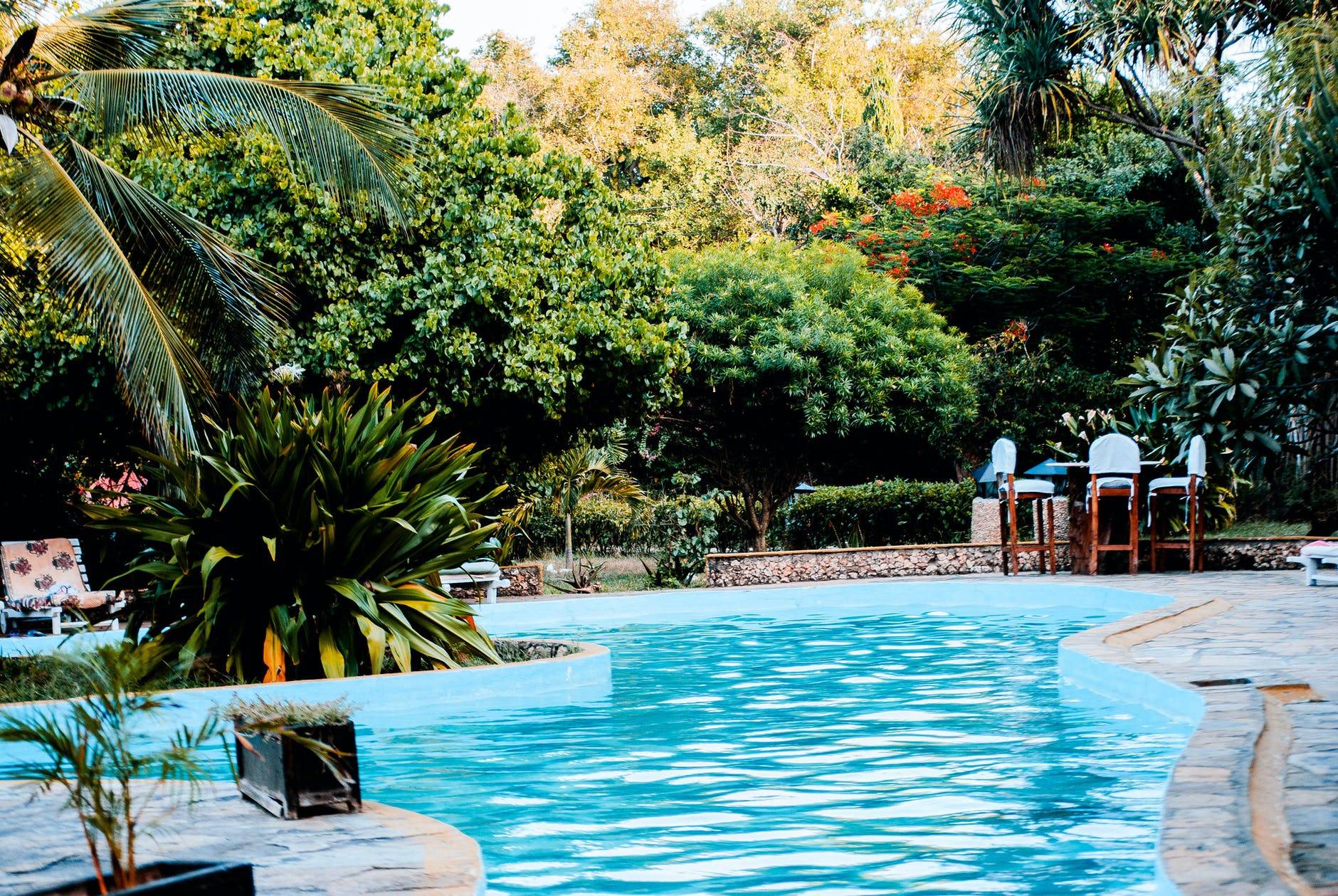- Jul 10, 2020
- 149
- Pool Size
- 20000
- Surface
- Plaster
- Chlorine
- Salt Water Generator
- SWG Type
- Pentair Intellichlor IC-40
We have a new pool that is not yet "officially" done as the installers need to come back and add salt and program the control panel. We have been told that it is still swimmable while the plaster finishes its curing process so In the meantime we have been maintaining Chlorine manually. That has been a struggle as we started with 0 CYA so CL dropped to about zero daily. Once CYA hit 40 the CL level became more stable but we hadn't yet worked out how much liquid CL (12.5%) to add and now its on the high side (5.0 FC / 0 CC) and we have been waiting for it to slowly come down to the 1.5-2.5 range (target per installers).
My question is how well I'm reading CYA levels with the "see the black dot" test? How much (if any) of a shadow of the dot marks the point at which I note my reading? and how much would one expect CYA to change with 300(ish) gallons of well water added to a 20,000 gallon Gunite pool?
Gradually adding (sock method) 4 lbs of stabilizer took a day for CYA to go from 0-20, another day to hit 25 and another day (5/17) to hit 40. I (more aggressively) added another 4lbs of stabilizer and saw CYA move up to 50 on 5/18 and top out at 60 on 5/20. Our installer came by and said we needed to add about an inch of water (approx 300 gal) and when I next tested the CYA level read as 45. I tested again today and got the same (45) reading. Would 300 gallons of well water cause that drop? Am I not correctly/consistently reading the level? Some combination of the 2?
I also saw my Calcium Hardness (CH) level go from a previously stable 210 on 5/17 to 240 on 5/22 (where it remains) without any treatments beyond that 300 gallons of well water. Is that change in CH due to my well water and where to people go to test their water for that? If my well water is bumping up the CH then how to I keep the water level high enough without eventually hitting the upper Calcium Hardness limits?
Current tests (5/24. 10:30 AM, with water temp @ 70F:
FC 5.0 / CC 0.0
pH 7.6
TA 100
CH 240
CYA 45
My question is how well I'm reading CYA levels with the "see the black dot" test? How much (if any) of a shadow of the dot marks the point at which I note my reading? and how much would one expect CYA to change with 300(ish) gallons of well water added to a 20,000 gallon Gunite pool?
Gradually adding (sock method) 4 lbs of stabilizer took a day for CYA to go from 0-20, another day to hit 25 and another day (5/17) to hit 40. I (more aggressively) added another 4lbs of stabilizer and saw CYA move up to 50 on 5/18 and top out at 60 on 5/20. Our installer came by and said we needed to add about an inch of water (approx 300 gal) and when I next tested the CYA level read as 45. I tested again today and got the same (45) reading. Would 300 gallons of well water cause that drop? Am I not correctly/consistently reading the level? Some combination of the 2?
I also saw my Calcium Hardness (CH) level go from a previously stable 210 on 5/17 to 240 on 5/22 (where it remains) without any treatments beyond that 300 gallons of well water. Is that change in CH due to my well water and where to people go to test their water for that? If my well water is bumping up the CH then how to I keep the water level high enough without eventually hitting the upper Calcium Hardness limits?
Current tests (5/24. 10:30 AM, with water temp @ 70F:
FC 5.0 / CC 0.0
pH 7.6
TA 100
CH 240
CYA 45


